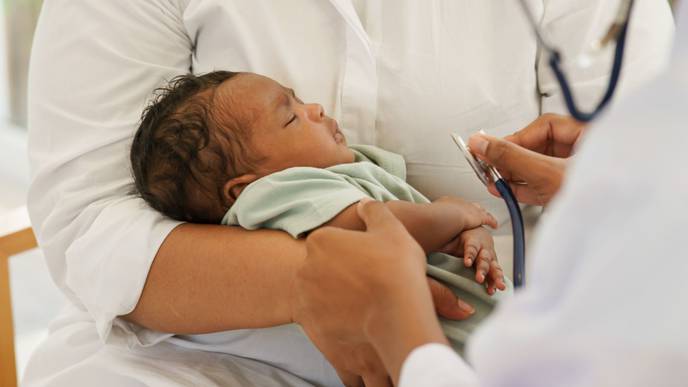Diagnosing Heart Issues in Children

03/01/2024
More adults are now living with congenital heart disease than ever before because of medical and technological advances that have allowed them to thrive decades beyond their initial childhood diagnosis.
“Years ago, we thought these hearts were fragile and needed sheltering,” said Dr. Diana Tsen, a pediatric cardiologist with Children’s Hospital Colorado who cares for patients at UCHealth Pediatric Heart and Vascular Clinic in Steamboat Springs. “But now, we encourage those with congenital heart defects not to live in a bubble. We want them to lead normal lives, enjoy sports and grow into healthy adults.”
Tsen treats patients with cardiac issues from birth through age 18, or even beyond in those cases when a young adult living in a rural area doesn’t have access to cardiology care.
Adult cardiology problems versus pediatric ones differ greatly in how they manifest. Typically for adults, heart attacks, strokes and clogged coronary arteries occur because of age, illness, disease and lifestyle choices such as smoking and sedentary behavior. Pediatric patients are generally seen for structural or electrical heart issues they are born with.
Heart problems with newborns
Pediatric heart abnormalities at birth can be on a spectrum ranging from minor to severe. Most severe defects are first detected in utero so that parents and medical staff are prepared when the baby is born to take appropriate action.
Tsen noted that heart defects are the most common congenital defect in newborns, occurring in one of every 100 births. Of these, the most common is a VSD, or ventricular septal defect.
As the heart is forming in utero, it needs to divide into four parts, or chambers. The two upper parts are the atria, and the lower pumping parts are the ventricles. Sometimes a hole, or VSD, occurs when the wall between the ventricles doesn’t close completely.
According to Tsen, depending on the size and location of the VSD, many patients who have this defect will live healthy and normal lives.
If heart disease is present in babies from birth to about 12 months, the child could be working hard to breathe and may tire easily or struggle to eat – ways babies can “voice” their problems.
“Eating is really baby’s only form of exercise,” said Tsen. “So rather than asking if you get winded when you walk up a flight of stairs, I’m asking if the baby is breathing hard, taking a long time to bottle or breastfeed, or has poor weight gain.”
Heart issues with older children
If chest pain is experienced at rest, Tsen stresses that, unlike in adults, the majority of these cases in kids are determined to be musculoskeletal or non-cardiac in origin. For older children, red flags to look for include cardiac symptoms experienced during exercise or exertion, such as chest pain, palpitations or passing out.
“Even though most chest pain in kids isn’t cardiac, it is completely reasonable to want to make sure your child’s heart is OK,” said Tsen. “That’s what we’re here to help with – we’ll ask the questions, get an EKG and pursue further testing if it’s indicated.”
Unless it’s an emergency, she advises parents to first consult a pediatrician if their child is experiencing any of the above symptoms. The pediatrician can then determine if a referral is needed to a pediatric cardiologist.
While the sudden death of seemingly healthy high school and college athletes on the field or court are frightening to hear about, Tsen said these types of fatalities can affect anyone – not just elite athletes – depending on family history or undiagnosed congenital issues.
It’s important to keep lines of communication open between student athletes and coaches, trainers, parents and physicians about any possible heart symptoms.
“Once students get to a certain age and level of competition, they want to tough it out and keep playing,” she said. “They need to know we want them to keep playing, and to make sure we have shared decision-making with the athlete and family if their heart needs any safety precautions.”
This story first appeared in the Steamboat Pilot.

Facebook Comments